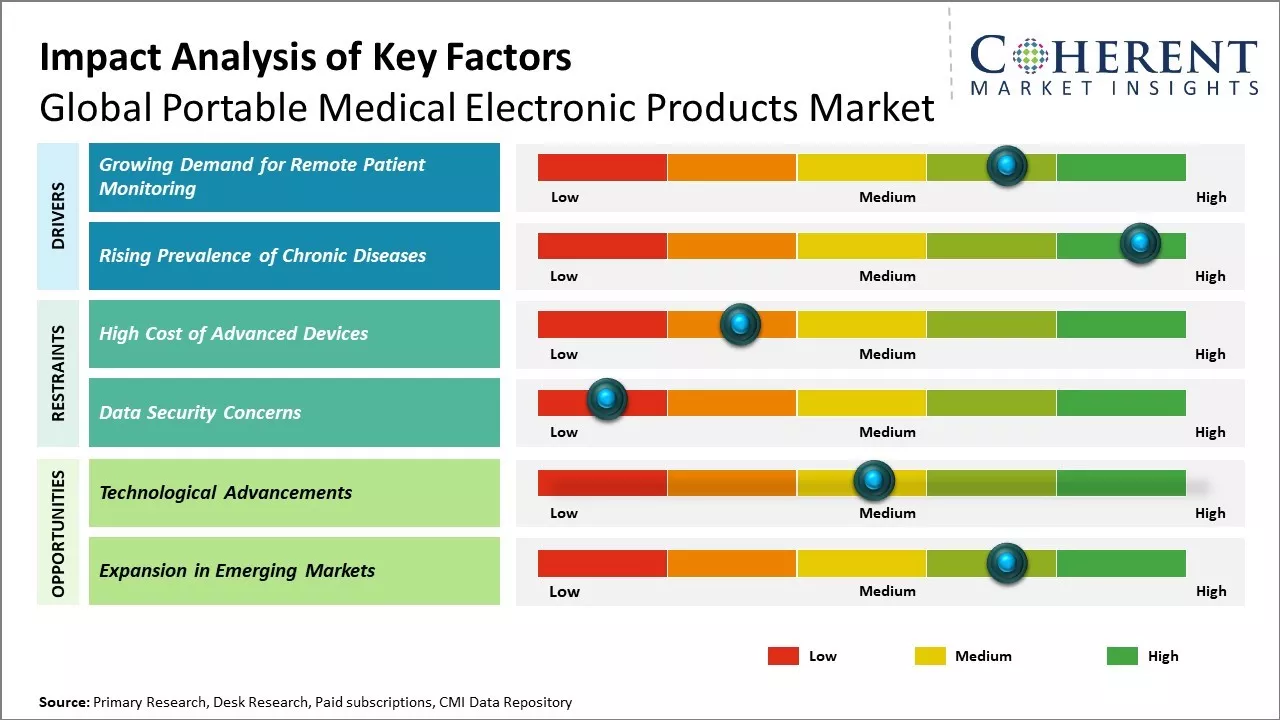The global portable medical electronic products market is estimated to be valued at USD 91.17 Billion in 2025 and is expected to reach USD 174.41 Billion by 2032, exhibiting a compound annual growth rate (CAGR) of 9.7% from 2025 to 2032. Rising disposable incomes and increases health awareness among the global population are the major factors driving the demand for portable medical devices.

To learn more about this report, Request sample copy
The market is witnessing rising demand for personalized and wireless medical devices due to the increasing preference for home healthcare among patients. Technological advancements enabling miniaturization and improved portability of devices along with growing telemedicine and remote patient monitoring trends are expected to boost the demand for portable medical electronic products over the forecast period.
Growing Demand for Remote Patient Monitoring
The healthcare industry has undergone rapid transformation in recent years with advanced medical devices and technologies revolutionizing patient care. One such area that has witnessed tremendous growth is remote patient monitoring which utilizes connected medical devices, apps, and platforms to monitor patients outside of conventional clinical settings. The traditional model of patients visiting healthcare facilities for routine checkups and treatments is steadily being replaced with remote monitoring solutions that allow the continuous tracking of vital signs and symptoms in the comfort of one's own home.
This shift is being driven by a number of factors such as the increasing preference among physicians and patients for less invasive treatment procedures and shorter hospital stays. Remote monitoring provides an improved follow up mechanism post treatment by facilitating close checks on recovery progress from the home without re-admission. It also enables earlier detection of deteriorations in health conditions through constant data transmission to provider portals. For elderly patients or those with limited mobility, remote care cuts down on unnecessary travel while still maintaining follow ups. The cost benefits from reduced hospitalization are proving attractive for both individuals as well as insurance providers.
The ongoing COVID-19 pandemic has further accelerated the widespread adoption of remote care practices. As social distancing became important, remote patient monitoring helped bridge the gap and continue essential care. It allowed higher risk individuals and those recovering from COVID-19 infections to be closely watched without physical visits. Telehealth consultations integrated with the home use of connected devices formed a viable alternative to in-person consultations. Going forward, remote monitoring is expected to remain an integral part of healthcare even post pandemic by facilitating affordable chronic care management. For instance, in February 2022, Healthnet Global, a subsidiary of Apollo Hospitals, launched Automaid, an advanced in-patient room automation system designed for remote patient monitoring and triaging.
Joining thousands of companies around the world committed to making the Excellent Business Solutions.
View All Our Clients